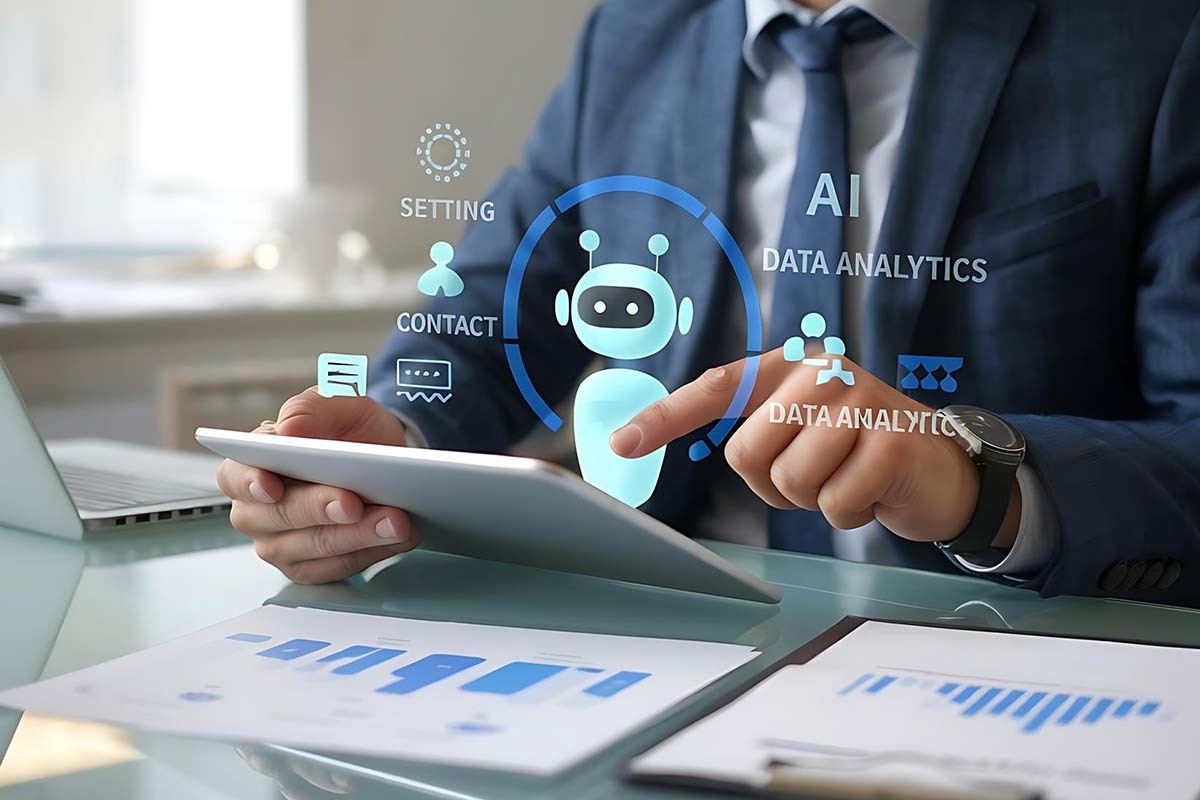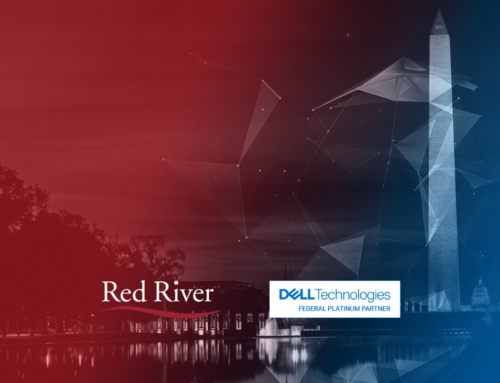
How Autonomous AI Agents Will Transform IT Operations
Quick Answer:
Autonomous AI agents are reshaping IT by moving beyond automation into agentic, self-learning systems that adapt in real time. These tools handle routine tasks, predict issues, enforce compliance and strengthen security, all without waiting for human input. The result is faster support, reduced costs and freed-up IT teams who can focus on strategy instead of tickets. Adaptive AI agents are quickly becoming essential partners in modern IT operations and business growth.
Want to learn more? Read on!
Technology teams face a paradox. Systems grow larger. Workloads pile up. Users expect instant answers. Yet IT resources rarely scale at the same pace. A single outage or delayed response ripples through the business, harming productivity and morale. In some cases, it even risks compliance.
Autonomous AI agents provide a new way forward. Unlike chatbots or scripted tools, these intelligent systems reason and adapt independently. By introducing agentic AI into IT operations, organizations gain self-learning support that responds to conditions in real time.
At a minimum, the result is faster service. But adaptive AI tools are also an IT function that actively drives business value by anticipating needs and evolving alongside them.
Autonomous AI agents give IT a powerful new ally. These aren’t chatbots or static scripts. These are intelligent systems that reason through problems, adapt to changing environments and learn from each interaction. They respond to real-time conditions without waiting for human input. That’s what makes them agentic: they can act independently while still aligning with business goals.
The result is a smarter, more agile IT organization that will help shape the future of your business.
From Automation to Agentic AI
According to a McKinsey global study, 78% of businesses this year say they’ve used AI and automation in at least one business function. Automation has always been about speed and scale. It helped IT cut down on manual tasks and systematize consistent workflows.
There is a downside, however. Automation also came with limits. Automated systems could only do what they were programmed to do and that meant they couldn’t adapt when things changed.
The evolution to agentic AI fixes that. These systems assess the environment, interpret human intent and choose the best course of action based on outcomes, not just rules. They can even detect when an issue falls outside the norm and decide how to escalate it.
Self-learning and adaptive by design, agentic AI can handle problems that cross departmental or technological boundaries. It doesn’t just pull data from one system. It looks across systems, across users and even across time. It connects the dots. For forward-thinking companies in competitive markets, that makes all the difference.
Why IT Operations Need Autonomous AI Agents Now
IT leaders are under pressure to do more with less. At the same time, there are more users. There are more remote connections. Gallup found that among U.S. employees whose jobs allow remote work, 79% spend at least some of their time working remotely (that is, either fully remote or hybrid). That means there are more potentially unsecured devices connecting to your network and more complexity. With ever-tightening budgets, however, there are fewer people to manage it all.
Autonomous AI agents answer this call and solve some, if not all of these issues. These systems work continuously, without fatigue or shift changes. They handle the repetitive, high-volume requests that used to drain IT resources. At the same time, they learn and improve from every task they solve. That means every ticket closed or issue resolved makes the system a little smarter.
As these agents learn from each interaction, they improve the accuracy and consistency of issue resolution. Over time, they accelerate service delivery in ways human teams struggle to replicate. But, most importantly, they free up real people to focus on more strategic, meaningful work. That’s not just a performance gain. It’s driving a cultural shift.
Reimagining The IT Help Desk with Adaptive AI
The help desk is where many IT frustrations begin. Long wait times. Repetitive tickets. Disconnected systems. Staff burnout trying to keep up.
Adaptive AI flips that model. Instead of waiting for users to call or submit a form, autonomous agents step in and solve common issues on the spot. Need a password reset? The AI takes care of it instantly. New hire starting tomorrow? The AI handles setup overnight. Service outage? The agent can spot it before the user even notices.
According to Moveworks, the average help desk ticket takes more than 30 hours to resolve without AI. With AI support, that time drops below 15 hours. Faster service is only the beginning. What follows is a complete shift in how organizations deliver and manage support.
Resolution time depends on multiple factors. Simpler issues might get solved in under two hours, while escalated or cross-system problems can stretch over several days. Internal IT teams often cannot keep up with fluctuating demand and inconsistent tooling adds further delays. Adaptive AI helps level the playing field by continuously learning from past interactions and applying that knowledge to future tickets.
A well-trained AI agent demonstrates self-learning in action, adapting to each environment and getting smarter with every request it handles. The system learns from patterns over time and adjusts its behavior to handle each request more efficiently. Human IT teams gain back the bandwidth to focus on priorities that often fall behind, such as responding faster to urgent requests or improving system reliability. That shift creates space for deeper problem-solving instead of chasing tickets.
End-users also benefit from this intelligent technology. You can expect them to spend less time waiting for support and more time getting work done. Quick, accurate resolutions help them stay productive without frustrating interruptions caused by a technology hiccup.
The impact of adaptive AI reaches beyond the help desk. The technology can play an active role in maintaining uptime and enforcing IT standards across systems.
Adaptive AI Across Infrastructure, Security and Compliance
The real power of agentic AI shows up across the entire IT landscape.
In infrastructure, AI monitors real-time signals from systems and devices. If a workload is starting to slow or a server begins trending toward failure, the AI can reroute resources, notify the right team and log the issue for audit, all without human intervention.
In security, AI agents look for unusual behaviors and flag risks. They compare activity to historical patterns and trigger containment steps when something doesn’t add up. By anticipating problems early, the system gives IT teams time to intervene before issues disrupt service or impact users.
In compliance, AI supports continuous audit-readiness. The system enforces access policies around the clock. It monitors for unusual activity involving sensitive data and responds immediately when conditions fall outside expected parameters. You don’t need to wait for a quarterly review to find a violation. When something goes wrong, the AI identifies the issue and takes immediate steps to correct it while keeping a record for future review.
For example, if an employee downloads a large volume of sensitive files after hours, the AI immediately revokes access and alerts the security team. In another case, the AI can block access for a contractor using expired credentials, then the system logs the attempt for a human compliance review. These real-time actions close gaps that manual audits might miss and help organizations maintain a consistent security posture.
These use cases all share one thing: they give IT the visibility and control it needs without forcing teams to stay buried in low-level tasks. That shift clears the way for more strategic, system-wide improvements.
What’s Next for Agentic AI

Agentic AI is starting to take on a larger role in IT. These systems now recognize unusual behavior across infrastructure. They respond to shifts in user activity and can take initiative without waiting for instructions. As the technology matures, these agents will move beyond task support into system guidance. They help teams avoid outages before they happen. They also respond to new risks and keep IT performance aligned with business needs as conditions change.
These shifts are not theoretical. IT teams are already using autonomous agents to increase uptime and reduce operational costs. An EY survey found 69% of executives say their companies use or are adopting agentic AI to stay competitive.
The benefits are exciting. Instead of managing endless service tickets, internal teams can direct their energy toward higher-value projects. The AI picks up the repetitive requests, allowing people to work more strategically. Business units benefit from faster service. Employees stay more productive. Ultimately, the IT department will become a stronger partner to the rest of the organization.
Microsoft’s Role in Enterprise-Ready AI
Microsoft has made significant investments in AI across its product ecosystem, which makes it a natural fit for organizations looking to operationalize autonomous agents. Tools like Microsoft Copilot, Power Automate and Azure AI provide a foundation for building intelligent workflows that respond in real time. These tools connect with Microsoft 365, Teams, Dynamics and other core business platforms to ensure automation aligns with how people already work.
Through Azure’s infrastructure, organizations gain access to powerful AI capabilities with enterprise-grade security, governance and compliance controls. The platform supports continuous learning through data feedback loops and integrates with Microsoft Sentinel and Microsoft Defender for proactive threat detection. This high level of integration shortens the learning curve and accelerates time to value. Organizations that already rely on Microsoft’s cloud stack can introduce agentic AI without disrupting their workflows.
Why Red River Makes AI Adoption Work
Artificial intelligence technology is growing more powerful, but it only delivers results when implemented well. That’s where Red River comes in.
We go beyond delivering tools by embedding autonomous AI directly into your IT operations so it fits the way your business runs.
You choose the model that fits:
- Shared control, where your team runs the platform while we provide training and support.
- Fully managed, where we handle updates, tuning and oversight.
- Hybrid models, where we start together and evolve the ownership over time.
Whatever the model, we bring the governance expertise and the deep IT knowledge that ensures your success. Whether you operate in the healthcare, government, or commercial sectors, Red River has the certifications and experience to ensure your AI deployment is safe and effective.
We also work alongside your people. That means change management, training, documentation and support. AI does not replace your team. These platforms offer us the tools that make your teams better.
Real Results, Not Just Promises
Recent data show that companies using agentic AI are already seeing concrete value. According to a 2025 survey, 79% of senior executives report their organizations are already utilizing AI agents in some aspect of their operations. Among those adopters, 66% report measurable productivity gains. More than 57% cite cost savings as a direct outcome.
In the same survey, 88% of executives plan to increase AI-related budgets over the next 12 months. Broad deployment remains less common: 35% of companies say AI agents are embedded broadly across workflows, while only 17% claim near-total adoption across functions.
These emerging results show both opportunity and risk. Some organizations are still limited to pilot projects or use cases isolated to IT or internal operations. Others are scaling more aggressively. The key difference lies in vision, readiness and your organization’s ability to handle change effectively.
Looking Ahead: The New Normal In IT
Gartner and other analysts call autonomous AI agents a top strategic technology trend. These tools are more than efficient; they act as digital team members. They can work without fatigue and grow more useful the longer they operate.
The future of IT will prioritize outcomes instead of tickets. Proactive service will replace reactive support. Limitations tied to staff availability will give way to AI-enabled continuity. Organizations willing to make the shift now are already seeing results.
Partner With Red River
Autonomous AI agents are no longer experimental. They’re the foundation of modern IT operations. The question is not if your organization will use them, but how soon.
Red River is ready to help. We understand the technology, the people and the process. We know how to bring them together in ways that create real value for our clients.
Let’s explore what’s possible together. Contact Red River to learn how agentic AI can elevate your IT strategy and empower your teams.
Q&A

written by
Corrin Jones
Corrin Jones is the Director of Digital Demand Generation. With over ten years of experience, she specializes in creating content and executing campaigns to drive growth and revenue. Connect with Corrin on LinkedIn.




